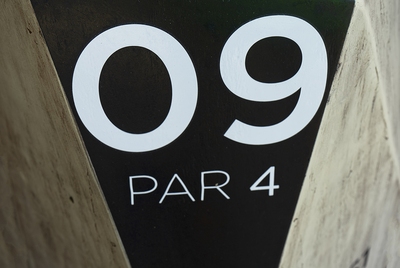 What do Bogey, Birdie, Eagle, Albatross Mean in Golf?
What do Bogey, Birdie, Eagle, Albatross Mean in Golf?
Golf, like many sports, has a vocabulary all of its own and to the outsider, it can seem like a foreign language at times.
Birdie, eagle and albatross might all sound like interesting terms to your average amateur ornithologist, but what do they mean when it comes to golf?
And what about the far less appealing sounding bogey?
Here we take a look at what these words mean in golfing parlance and how they relate to the scoring system used in the sport.
In addition, we will also look at some of the other key terms you might hear when playing, watching, or indeed betting on the great and glorious game of golf.
Let’s Start With A Par
 Before we look at the other terms listed in the title of this piece it is perhaps best to explain another term in golf, the term to which they all relate. The word “par” comes from Latin, with par meaning equal. In the 6th century, it came to mean equal in value or of equal standing and the golf term is thought to have developed out of this at some time towards the end of the 19th century.
Before we look at the other terms listed in the title of this piece it is perhaps best to explain another term in golf, the term to which they all relate. The word “par” comes from Latin, with par meaning equal. In the 6th century, it came to mean equal in value or of equal standing and the golf term is thought to have developed out of this at some time towards the end of the 19th century.
In golf, each hole is assigned a par and this is the number of strokes that a golfer with a handicap of zero would be expected to play that hole in, i.e. how many shots they should take to get the ball from the tee into the hole. Broadly speaking, holes of up to around 250 yards, where a player can reach the green in one shot, are par threes; holes of 251 to 470 yards are par fours, with players expected to reach the green in two shots; and holes over 470 yards are par fives, with three shots to reach the green and two putts being the expectation.
These distances are not set in stone and have changed a little to allow for the longer distances modern players hit the ball. Not all that long ago holes over 450 yards tended to be a par five but it is not that uncommon now to see a par four of more than 500 yards and par threes longer than 250 yards.
As well as par being the score a good golfer should get on each hole, the course as a whole is assigned a par (simply an addition of the pars for each of the 18 holes), with a standard layout being a par 72. This is typically made up of four par threes, four par fives and 10 par fours, though this may vary and some courses may be par 73, par 71, or perhaps par 70. The word is also used in a related but subtly different way to describe the result when someone achieves the “correct” score on a given hole or over 18 holes.
So if a player achieves a four on a par four hole, they are said to have parred it, or made par, whilst a total of 72 will often be described as “level par”.
What Is A Birdie In Golf?
 Now we understand what par is, the rest of the key terms we are looking at are all very simple to explain because they directly relate to the concept of par. A birdie is a score of one under par; so for example registering a score of two shots on a par three hole will be described as a birdie, or we may say the player birdied the hole.
Now we understand what par is, the rest of the key terms we are looking at are all very simple to explain because they directly relate to the concept of par. A birdie is a score of one under par; so for example registering a score of two shots on a par three hole will be described as a birdie, or we may say the player birdied the hole.
Perhaps somewhat confusingly for those who have heard the word par in general usage, in golf, being under par is good. In everyday usage, if we are ill we may say we feel a little under or below par, or we might describe someone’s poor performance the same way. This probably relates to the Latin origins of the word but in golf, completing a hole in fewer shots is better and is described as being under par.
As such, if someone records a birdie four at the opening hole (it being a par five), they are said to be one under par, otherwise written as -1, or possibly said as “minus one”. So, quite simply, a birdie is where a player records a score of one under par on a given hole, completing it in one shot fewer than the designated par score.
What Is A Bogey In Golf?
 A bogey is, in a sense, the opposite of a birdie and is when a player completes the hole in one more shot than par. So should a player take six shots to complete a par five, that is a bogey and they may be said to have bogeyed the hole. Birdies are brilliant but bogeys are bad and players want to keep bogeys off their card.
A bogey is, in a sense, the opposite of a birdie and is when a player completes the hole in one more shot than par. So should a player take six shots to complete a par five, that is a bogey and they may be said to have bogeyed the hole. Birdies are brilliant but bogeys are bad and players want to keep bogeys off their card.
According to the USGA (the official governing body of the game in America), the word bogey comes from the song “The Bogey Man”, the eponymous character being “an elusive figure who hid in the shadows: ‘I’m the Bogey Man, catch me if you can.’”
Golfing trivia fans will be keen to note that in actual fact a bogey was initially what we now call a par, the USGA explaining that “Golfers in Scotland and England equated the quest for the elusive Bogey Man with the quest for the elusive perfect score. By the mid to late 1890s, the term ‘bogey score’ referred to the ideal score a good player could be expected to make on a hole under perfect conditions.”
It was not until the first two decades of the 20th century that the phrase par came into usage to mean the perfect, or correct, score. At this time a bogey came to mean a score worse than par, more in keeping with the word’s generally negative associations.
Eagle
 In keeping with the ornithological theme first introduced by a birdie, an eagle is a score that is two shots better than par. The most common way to record an eagle is by making a three at a par five, although a player can also make a two at a par four or score a hole in one (otherwise called an ace) at a par three. However it happens, an eagle sees a player’s score against par improve by two shots, moving them, for example, from -13 to -15.
In keeping with the ornithological theme first introduced by a birdie, an eagle is a score that is two shots better than par. The most common way to record an eagle is by making a three at a par five, although a player can also make a two at a par four or score a hole in one (otherwise called an ace) at a par three. However it happens, an eagle sees a player’s score against par improve by two shots, moving them, for example, from -13 to -15.
The word, like albatross, which we will explain next, is simply derived from the term for a score one under, a birdie. But why a birdie in the first place? Well, once again the USGA tell us that whilst bogeys were an Anglo-Scots invention, the term “birdie” was first coined in America. According to H.B. Martin’s “Fifty Years of American Golf”, in 1891 a game was being played in Atlantic City. One of the players, Ab Smith apparently hit his shot to within a few inches of the hole and remarked “That was a bird of a shot…”
At this time the slang “bird” meant anything or anyone that was brilliant, wonderful or excellent. Smith explained further that the group agreed that should any player achieve a score of one under on a hole they would receive “double compensation”. From then on every time any of the players did this they called it a birdie and somehow the terminology not only stuck but spread around the entire world.
Albatross
 An albatross is exceptionally rare and, as you might have guessed, is when a player scores three under par on a single hole. This is impossible on a par three but on occasion, a player may hole their tee shot on a par four or, more commonly, hole their second shot from distance on a par five. Indeed, this is how probably the most famous albatross ever scored came about.
An albatross is exceptionally rare and, as you might have guessed, is when a player scores three under par on a single hole. This is impossible on a par three but on occasion, a player may hole their tee shot on a par four or, more commonly, hole their second shot from distance on a par five. Indeed, this is how probably the most famous albatross ever scored came about.
In 1935 the legendary Gene Sarazen was playing the 15th hole of the final round at Augusta in the US Masters. Trailing by three shots he produced “the shot heard ’round the world”, finding the hole with his second shot from 232 yards. Sarazen would go on to win in a play-off and his remarkable albatross was commemorated 20 years later with the addition of the greenside Sarazen Bridge on the hole.
In the UK a score of three under on a hole is almost always called an albatross. However, in America the term “double eagle” is sometimes used. Either way, all you need to know is that an albatross/double eagle is scored when a player completes a hole in three shots fewer than its par.
Double, Triple And Quadruple Bogey
 Whilst birdies, eagles and albatrosses are highly desired, at the opposite and of the spectrum we have the relatively self-explanatory double, treble and quadruple bogeys. Unsurprisingly these represent scores of two, three and four over par respectively. So a commentator might, for example, say “Rory has just scored a quadruple bogey nine at the par five 13th, just when it was looking like he had a chance”. Once again, the total scored doesn’t matter, other than that a double bogey is two more than par, a treble three, and a quadruple four.
Whilst birdies, eagles and albatrosses are highly desired, at the opposite and of the spectrum we have the relatively self-explanatory double, treble and quadruple bogeys. Unsurprisingly these represent scores of two, three and four over par respectively. So a commentator might, for example, say “Rory has just scored a quadruple bogey nine at the par five 13th, just when it was looking like he had a chance”. Once again, the total scored doesn’t matter, other than that a double bogey is two more than par, a treble three, and a quadruple four.
Of course, in theory, these terms can extend indefinitely, with a quintuple bogey, sextuple bogey and so on. Over the years some of the greatest names in the sport have racked up huge scores, usually through repeatedly hitting their shots into water hazards. There have been lots and lots of 12s, 13s and 14s scored if we look far enough back, whilst at the 2011 Valero Texas Open Kevin Na recorded a 16 at the par-four ninth, a whopping 12 over. We don’t even know the term for that, other than tournament-wrecker!
Mind you, that isn’t even the worst score registered in a full professional tournament. Not by a long shot in fact (or should we say several long shots, quite a few short shots and some in between). The worst score in top-class golfing history was a scarcely believable 23. It was on a par five though, so only a mere 18 shots over par. What’s more, this was no golfing journeyman but was actually Tommy Armour.
The Edinburgh-born “Silver Scot” won three majors in his career but the pain of a 23 on the card must surely still have been severe. His octodecuple (we had to look that up) bogey came at the 1927 Shawnee Open, showing that golf is no respecter of reputation. He reported hit the ball out of bounds 10 times – quite an achievement.
Other Golf Terms

Whilst the main focus of this piece is the terminology used in relation to scoring, golf is packed with other unusual phrases too. Here we look at some of the more common ones.
Dormie
Dormie is a word you will only hear in relation to match play contests, such as the Ryder Cup or other similar team events, or the WGC Match Play. It refers to a situation where a player cannot lose the match and the best outcome possible for their opponent is a halved game. Dormie occurs when one player leads by as many holes as remain; for example if Nick Faldo was four holes up on Greg Norman with just four holes left to play, Faldo would be said to be “dormie four”.
The exact origin of the term is somewhat disputed but certainly lies in the Latin word dormire, to sleep, from which we get the Spanish and French dormir and English words such as dormant. It is argued by some that the word dormie derives from the fact that the player in front could go to sleep and still not lose.
Fore
If you play golf you will almost certainly be familiar with the shouting of the word “fore!” following an errant shot. You will also from time to time hear the pros perhaps shouting “fore right!”, or “fore left!”, indicating which way the ball has gone. The word is a warning to fellow golfers, and in pro tournaments, more often to fans lining the fairways, that the ball is coming their way.
The word should really be written ‘fore, as it is an abbreviated form of before, or afore and means, in essence, to be on guard and look out in front or ahead. It derived from the military but was a common term in the sport of golf from around the 1700s.
Mulligan
A mulligan is not something you will see or hear of in the professional game (though in informal events such as some pro-ams, exhibition games or skins matches you might). The origins of the phrase are so highly disputed that we aren’t sure any can be really believed and as such we will not go into much detail.
Most theories suggest that a chap called David Mulligan, though perhaps John Mulligan… or then and again, maybe he was called Buddy, was involved. Whatever Mulligan’s first name, he hit an errant drive and then either instinctively teed up another ball or was allowed to, depending on the story. Once again, different versions of events suggest he was allowed an extra shot for a range of reasons but whatever the truth, a mulligan now refers to a player being given a second bite of a golfing cherry.
Americans may use the phrase “do-over”, as in you are getting to do the shot “over again”. Mulligans are most commonly taken on tee shots but in theory a player may receive a mulligan on any shot and be permitted to take the shot again. Mulligans tend to be at the discretion of the other players on an ad hoc basis, although it may be agreed in advance that one or more of the players can receive a mulligan to use as they wish.
Skins
We mentioned skins earlier but for those unfamiliar with the term, this is a form of match play golf with money involved. It is usually played in threeballs or fourballs but can be played when there are just two. Each hole has a prize, called a skin, and whoever wins the hole takes the cash. Should any two players tie, the cash rolls over onto the next hole and so on until there is a single outright winner.
Due to the frequency of halves, the skins often roll onto the next hole. This, in addition to the fact that the value of the skins usually increases over the 18 holes, means that considerable sums can be won on a single hole.
Skins is sometimes called “scats”, “cats” or “syndicates”, with all the shorter forms, including skins, thought to derive from the latter, syndicates. It is unclear whether or not the term has any links with the phrase “skin in the game” but it seems unlikely.
Golf
The name golf itself is sometimes incorrectly said to derive from the phrase Gentlemen Only Ladies Forbidden, being an acronym of that. Whilst there has certainly been a good degree of gender-based discrimination in the game, this is theory is not factual. Instead, golf takes its name from “kolf” or “kolve”, a Dutch word that means club.
By the 16th century this had become golf in Scotland, having earlier dialectic versions “gouff” and “goff” that date to around the 1400s. It has been suggested that the earliest form of the game in Netherlands involved playing on frozen canals and that Dutch sailors brought the game to Scotland’s east coast.
Links
Some would argue that there are five types or styles of golf course: links, parkland, heathland, stadium and sandbelt. The most common to feature on the pro tours are certainly parkland, which is largely self-explanatory, stadium and links. A stadium course is a relatively new phenomenon and describes a layout that was built specifically to host big events and accommodate lots of fans. They have lots of space for stands and plenty of natural viewing areas but from a golf perspective they are typically parkland courses really.
Links courses always host the Open Championship and only rarely feature on the PGA Tour in America. It was these courses where golf was born, the word deriving from hlinc, an Old English word that meant poor quality farming land that was sandy and ridged along the coast.
Links courses are usually coastal, though you can have an inland links too, with bumpy fairways and greens. Wind is often a factor due to the coastal location and lack of trees on these courses and whilst there may be streams and burns, you will not see other water features such as lakes at a links course. Due to the sandy soil, links courses drain well, so tend to be firm, meaning players are forced to be far more creative with their play and hit a wider range of shots. Many feel that links courses provide the purest and most thorough golfing test, especially when compared to the “point and shoot” approach that can be used at many US parkland courses.
The Cut
The cut is the system used to trim the field, typically for the final two days of a four-day competition. Cut rules vary from tour to tour and event to event but generally just under half of the players will “make the cut”, which means they are able to complete the tournament on Saturday and Sunday.
Players who do not make the cut will receive little, if any, prize money and typically to make the cut you might have to end the second round in the top 65 (plus ties). Tournaments have a cut to speed up play on the final two days, allowing players to play as twoballs rather than in threes, and limiting the field only to those players who have a realistic chance of glory.
